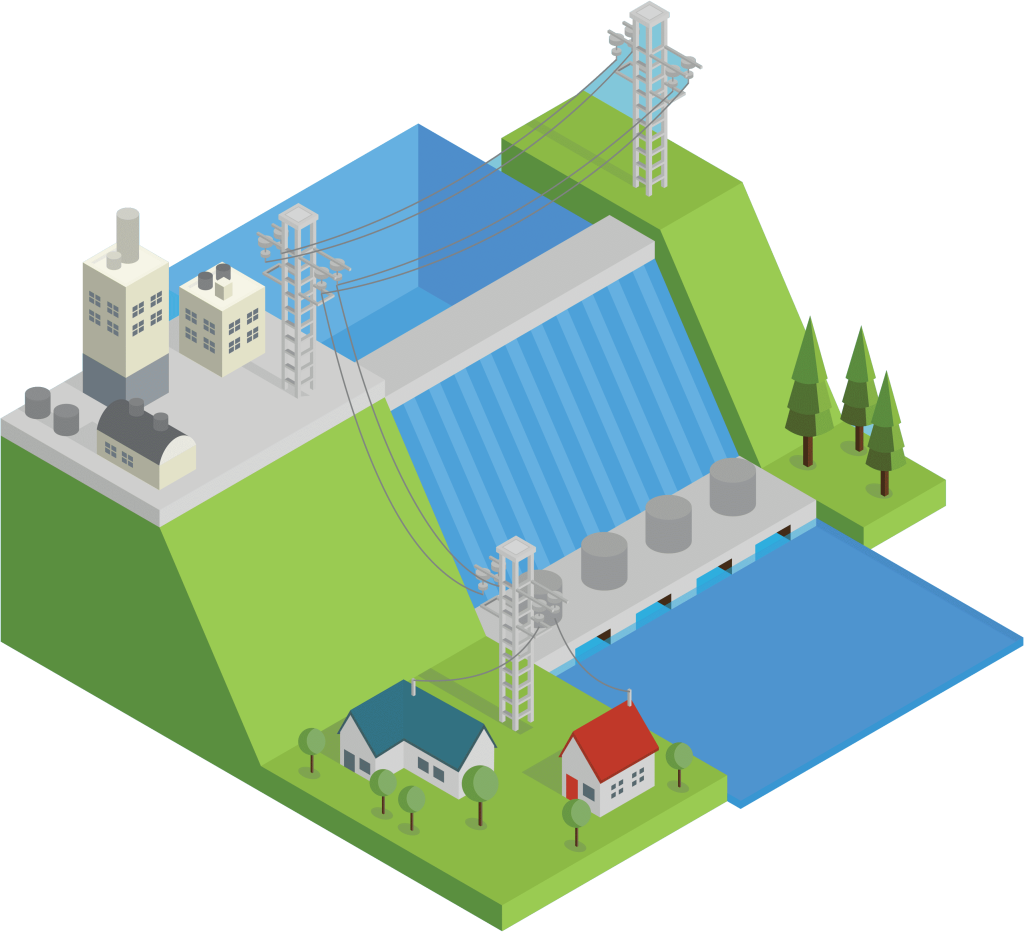Hydropower Plants

Introduction to Hydropower Plants
Hydropower plants generate electricity by utilizing the energy from flowing or falling water. These plants harness the kinetic energy of water to rotate turbines, which in turn generate electrical power. Hydropower is a renewable energy source that has been used for many years due to its reliability and environmental benefits.
Question 1: What are Hydropower Plants?
a) Plants that produce electricity from wind energy
b) Plants that convert solar energy into electricity
c) Plants that generate electricity from flowing or falling water
Answer: c) Plants that generate electricity from flowing or falling water
Types of Hydropower Plants
There are different types of hydropower plants, including:
- Run-of-River Plants: These plants use the natural flow of a river to generate electricity without the need for large reservoirs. Water is diverted through a channel, and the energy is extracted by turbines.
- Reservoir Plants: These plants store water in a reservoir created by a dam. The stored water is released through the dam, and the flow is controlled to generate electricity when needed.
- Pumped Storage Plants: These plants have two reservoirs at different elevations. During periods of low electricity demand, excess electricity is used to pump water from a lower reservoir to an upper reservoir. When electricity demand is high, the stored water is released to generate electricity.
Question 2: What are some types of Hydropower Plants?
a) Solar power plants, Wind farms, Geothermal power plants
b) Run-of-River Plants, Reservoir Plants, Pumped Storage Plants
c) Nuclear power plants, Fossil fuel power plants, Biomass power plants
Answer: b) Run-of-River Plants, Reservoir Plants, Pumped Storage Plants
Advantages of Hydropower Plants
Hydropower plants offer several advantages:
- Renewable Energy Source: Hydropower is a clean and renewable energy source that does not produce greenhouse gas emissions during operation.
- Reliable and Dispatchable: Hydropower provides a consistent and reliable source of electricity, with the ability to adjust power output based on demand.
- Water Management: Hydropower plants can help with water management by regulating river flow and providing flood control.
Question 3: What are some of the advantages of Hydropower Plants?
a) High carbon emissions, Non-renewable energy source, Water pollution
b) Renewable energy source, Reliable and dispatchable, Water management
c) Depletion of natural resources, Increased waste volume, Environmental pollution
Answer: b) Renewable energy source, Reliable and dispatchable, Water management
Environmental Considerations
Hydropower plants have certain environmental considerations:
- Fish Passage: Dams can disrupt fish migration patterns, but measures such as fish ladders or fish bypass systems can be implemented to mitigate the impact.
- Ecological Impact: Alterations in river flow and the flooding of land can affect local ecosystems and habitats. Environmental assessments are conducted to minimize negative impacts and protect biodiversity.
- Sedimentation: Dams can trap sediments, leading to downstream erosion and changes in the riverbed. Sediment management strategies are employed to mitigate this issue.
Question 4: What are some environmental considerations for Hydropower Plants?
a) Energy efficiency, Noise pollution, Soil erosion
b) Fish passage, Ecological impact, Sedimentation
c) Greenhouse gas emissions, Air pollution, Waste disposal
Answer: b) Fish passage, Ecological impact, Sedimentation
Case Studies
Well Done !